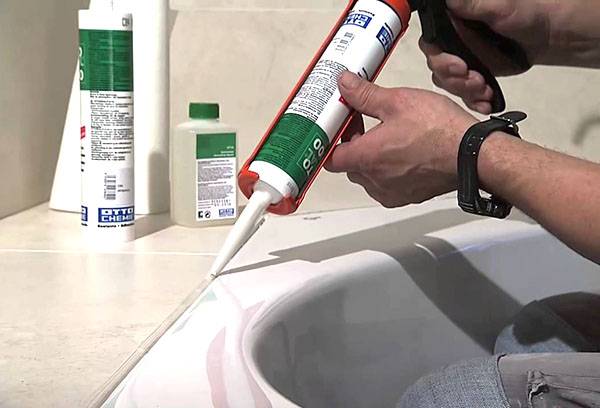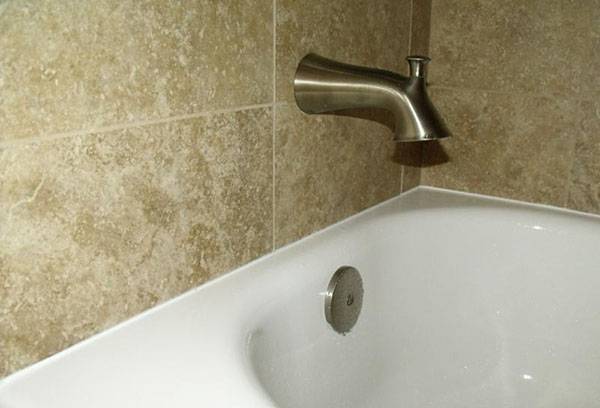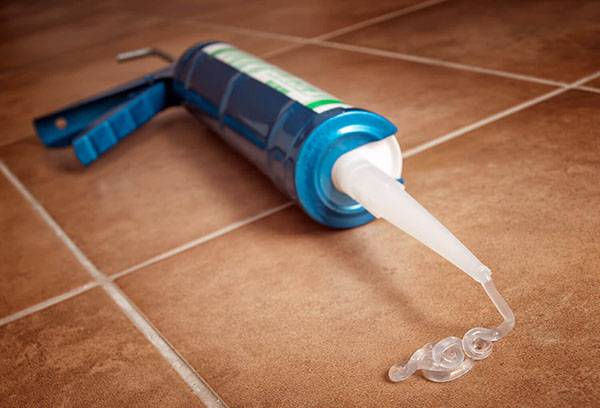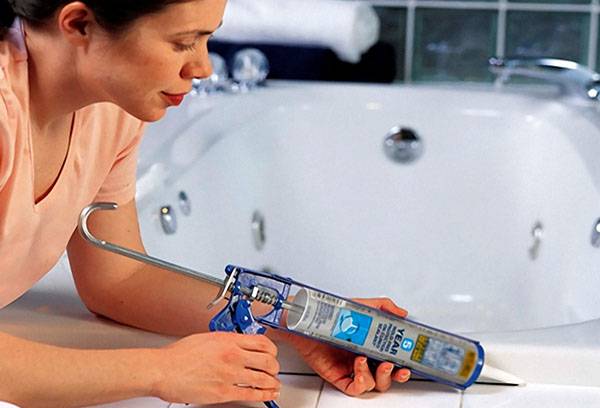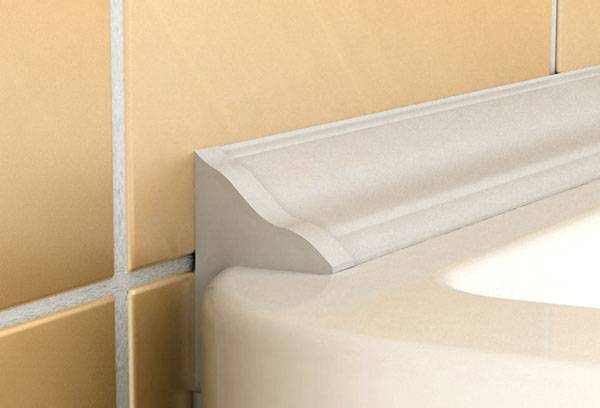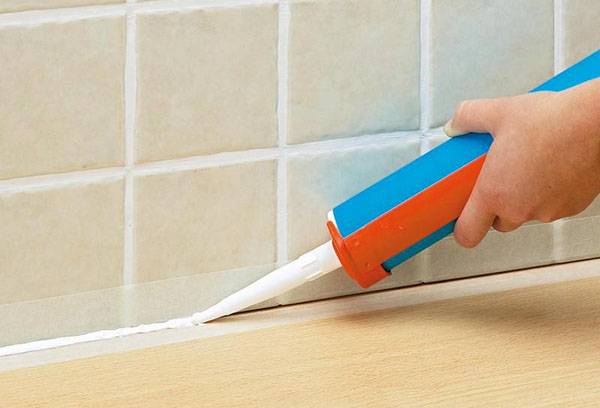Which is better to choose a sealant for insulation of joints in the bathroom?
Content:
The bathroom is a place with high humidity, where, in order to avoid leaks and water accumulation, even greater dampness, and, accordingly, the appearance of mold and the propagation of moisture-loving insects, it is customary to isolate the joints of plumbing fixtures with walls and furniture, often with sealants. We'll figure out what they all look like, which sealant is better for the bathroom and how to work with it correctly.
About Material
Sealants - a group of materials based on polymer components, where the main active ingredient is one of several types of polymers. Their main goal is to create a dense and impermeable coating. The properties of simple compounds end here, more specialized sealants can contain antifungal protection (simply put, it will be a sealant for the bathroom against mold), be especially resistant to temperature fluctuations, rely on regular loads and work on bending, stretching or compression, it is well painted and etc.
Sealants can be one-component (harden after application under the influence of air) or two-component (hardening only after some time after mixing two compounds from different packages).
Necessary material properties
A high-quality sealing compound must meet several important requirements.
- To be waterproof (and for damp rooms this property goes to the top of the most important).
- Maintain a certain elasticity and at the same time durability for a long time.
- To be environmentally friendly, that is, not to emit hazardous substances during operation under the influence of water, light, detergents, shampoos and other cosmetic products.
- To show a good degree of adhesion to various types of surfaces, because otherwise it will be completely impossible to achieve the proper level of insulation of the joints.
- If it is necessary to obtain a seam other than white, it should be evenly painted or contain persistent colored pigments.
Tip
It is better to work with sealant in a ventilated area, since many compounds have an unpleasant odor before solidification.
Varieties of sealing compounds
The differences between different sealants by the presence of special properties are understandable, but the type of the main polymer in the composition also gives a noticeable difference in characteristics. For bathrooms, sealants based on acrylic, silicone or polyurethane are more often used, so let's briefly go over their basic properties to know how to choose the ideal insulation material, for example, for an acrylic bathtub or a far corner of the room.
Acrylic compounds shrink most of all and over time noticeably lose elasticity. Therefore, strong temperature differences - if, for example, the bathroom is poorly heated or the seam passes near the hot pipes - they tolerate worse. But such sealants are better sanded and painted.
Silicone joint sealant is much more flexible, therefore it can withstand compressive, tensile and bending stress without deforming, and also has excellent adhesion to even very smooth surfaces, like the same tiles or porcelain tiles often used in decorating bathrooms. At the same time, it is much worse painted, but this problem is solved by choosing the right product in terms of color. A much more significant drawback is that silicone acid compounds are not suitable for metal structures, since they enter into chemical reactions with them. Therefore, the scope of their application is limited to plastic, ceramic, glass wooden and other non-metallic surfaces. That is, for example, they suit perfectly for an acrylic bath. But neutral acrylic compositions, differing by a slightly higher price, can be used with metal without any negative consequences.
Compositions with polyurethane are characterized by the greatest strength and durability, resistant to various aggressive compounds and loads, well tolerate changes in temperature and humidity. The only minus is a higher price in comparison with the previous options.
Summarizing, we can say that any sealant described above for acrylic bathtubs and other furniture and surfaces in the bathroom can be used, but still silicone sealant is best suited for these purposes due to the combination of affordable price and excellent performance. When contacting the insulating material with metal structures, make sure that the neutral version of such a sealant is selected.
Selection recommendations
- Differences of sealants depending on the main constituent substance were discussed in detail above, and these characteristics should be taken into account when choosing the type of sealing compound.
- It is also worth paying attention to the labeling of products, since those that can be used for joints in the bathroom will definitely have a corresponding mention.
- So that then less effort and cost is spent on combating the fungus, you should immediately take care of yourself and choose a sealant for the bathroom against mold with fungicides in the composition. It is not a fact that he will not be susceptible to the fungus at all, but he will appear there much less frequently and in smaller quantities.
Rules for sealing joints in the bathroom
The general principle of working with sealants remains unchanged, but each specific product may have its own small features, so you should not ignore the instructions for use - otherwise, if you don’t spoil all the work, you may encounter difficulties and unnecessary problems.
Before applying sealant, the insulated areas must be properly prepared. They should be cleaned of dust, dirt, fungus, grease and other contaminants. They do not need a particularly strong leveling - small roughnesses will only strengthen the joint. But, of course, there should not be large holes or bulges of a few centimeters, nor should pieces of the surface striving to break off, for example, a top cover of furniture or a layer of plaster or cement. Obviously, the sealant will easily fall off with them, but normal insulation will not work.
Tip
To make the seam even, it is recommended to stick on the edges of the strip of masking tape. They are removed when the sealant has already begun to harden and noticeably thickened, but not completely dried.
Next, the sealant is applied with a layer of medium thickness, distributing and leveling with a soft rubber spatula or finger. In the second case, of course, work should be done with gloves so as not to harm the skin of the hands. The compositions of sealants are usually not so aggressive as to lead to some serious irreparable consequences, but washing them is not easy, the skin tissue can be damaged mechanically or it may interfere with an allergic reaction.
The exact drying time depends on the particular sealant, the size of the joints in the bathroom and the temperature and humidity of the room. Obviously, a thick seam in a damp and cool bath will dry longer. The average figures are 10-15 minutes at the beginning of solidification and about a day for complete drying. Until this time, it is desirable to exclude any effects on the seams in order to avoid their deformation.
Sealant alternatives
With all the positive properties of this material, its use is not always appropriate and optimal. Consider situations where you can and should give preference to something else.
- Thin joints (up to 3-5 mm) in fixed areas of the bathroom should be tiled with grout.
- It is recommended to cover very wide empty spaces with plastic skirting boards (and bottlenecks of the joints of these skirting boards with surfaces already seal with sealant).
You can also often find the use of so-called adhesive tape, which in fact is a flexible rubber sill with an average width of 3-7 cm with an adhesive applied on one side. Typically, the tape is heated from this side so that the glue softens, and then tightly pressed to the surface. This option is not so bad, but rather difficult to work with. Without skills, it is difficult to evenly warm the tape and provide it with a tight and even fit to the walls of the bathroom and its surroundings. As a result, the joints are, alas, not tight enough. Therefore, sealant for the bath is preferable to use.
To summarize
Sealants for joints in damp rooms - a guarantee, if not completely getting rid of dampness and fungus in the far corners, but their significant minimization, especially if you choose a special sealant for the bathroom against mold with the appropriate additives. A variety of compositions are suitable for this room, but if you understand in detail which is better, silicone-based ones are most suitable. Such a sealant for bathtubs and other furniture in the room is good because it is strong, flexible, durable, tolerates changes in temperature and humidity without deformation, while being quite affordable. But combined acrylic-silicone compounds, as well as more expensive polyurethane, can also be an excellent alternative to it. To work with sealing compounds, there is no need to be an expert in the construction business - it is very simple to use them, in addition, manufacturers usually provide their products with detailed instructions for use.
